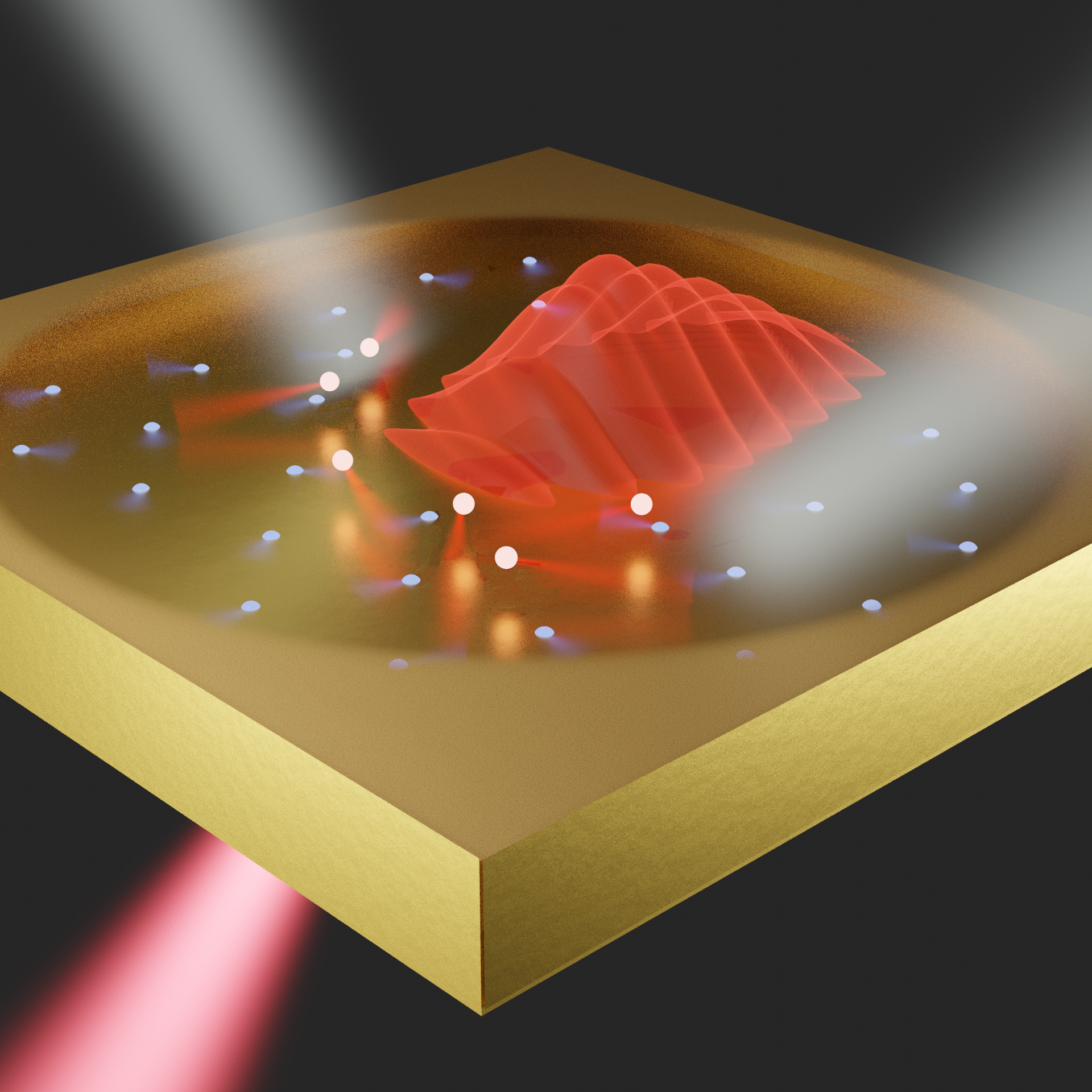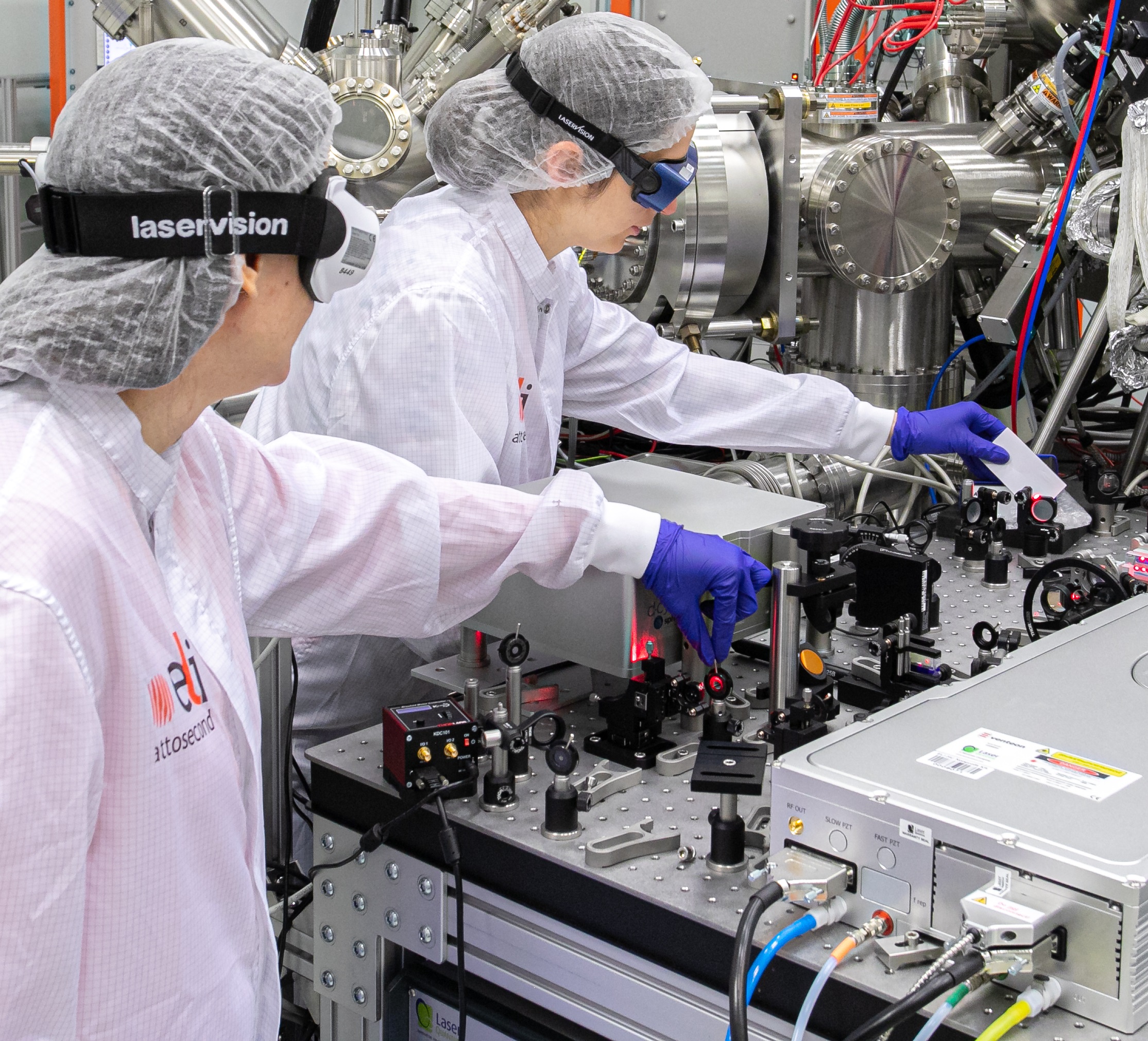Hungarian researchers have made significant progress in examining the properties of so-called hot electrons in metals. In the future, their results can be used in important applications such as development of solar cells and nanoscale circuits, or improvement of the sensitivity of various sensor types.

Generation of hot electrons with laser light in a nanometric metal layer (image credit: B. Major)
By illuminating metals with light, high-energy electrons can be generated. These are called hot electrons. Due to their excess energy, these electrons can be exploited in various fields such as catalyzing chemical reactions, making solar cells more efficient, increasing sensitivity of sensors, or even developing nanoscale circuitry.
However, it is very difficult to probe these hot electrons experimentally, since such electrons remain in the metal even after the arrival of the light beam. Nevertheless, for future applications it is important to know how much extra energy they have and where they are located within the material. Researchers of the ELI-ALPS Research Institute, the Wigner Research Center for Physics, the University of Szeged and the Center for Energy Research answer these questions in their article recently published in Nature Communications.

Researchers from ELI-ALPS and Wigner Research Center for Physics are conducting a laser experiment
The team has developed a radically new and more sensitive approach for studying hot electrons than ever before. In their experiments, they investigated the reflection properties of light emitted onto the sample with a thin, nanometer gold layer while hot electrons were created in it using laser light. By analyzing the changes in the reflection properties, they found that these electrons are concentrated very close to the surface in a depth of only about 4 nanometers. The analysis of the excess energy of these electrons also provided the steps the hot electrons take upon their generation. These results will be of immense importance for the development of such electron-based devices or solar cells.
Link to the original paper: https://www.nature.com/articles/s41467-022-34554-5



